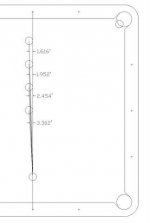Looking forward to it.
I know one thing for sure,, I'm sure i can learn more from you, than you could from me !!! LOL
Respectfully,
y
I'm going to be around Ft. Worth more in the coming months. Maybe we can go to Rusty's in Arlington or Ft. Worth sometime.
yeah, I understand not wanting to be "abused" by the two smartest pool sweaters in the world.ttys
I know one thing for sure,, I'm sure i can learn more from you, than you could from me !!! LOL
Respectfully,
y
